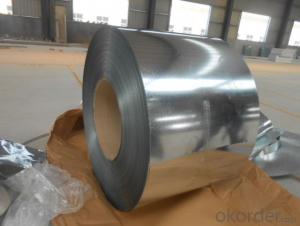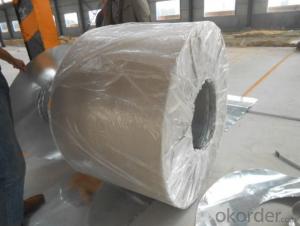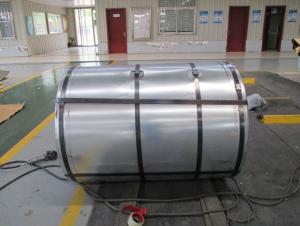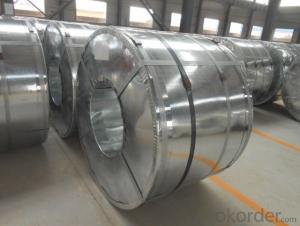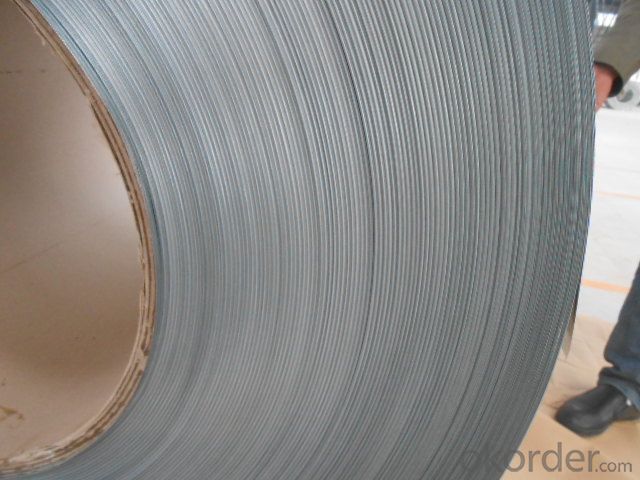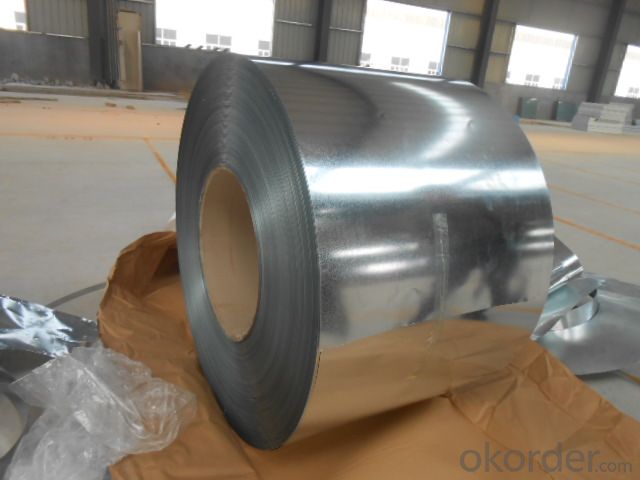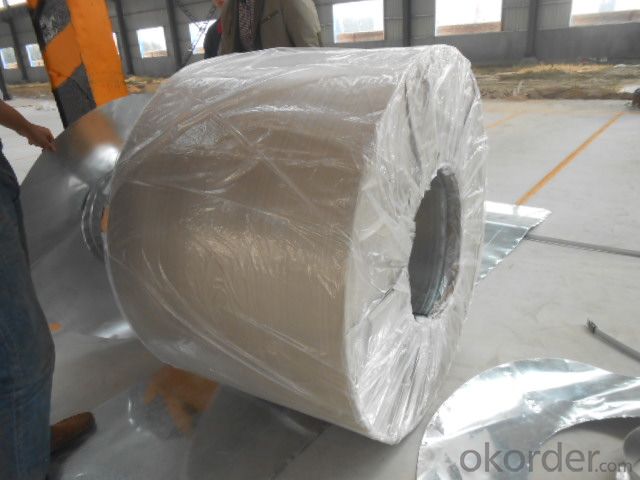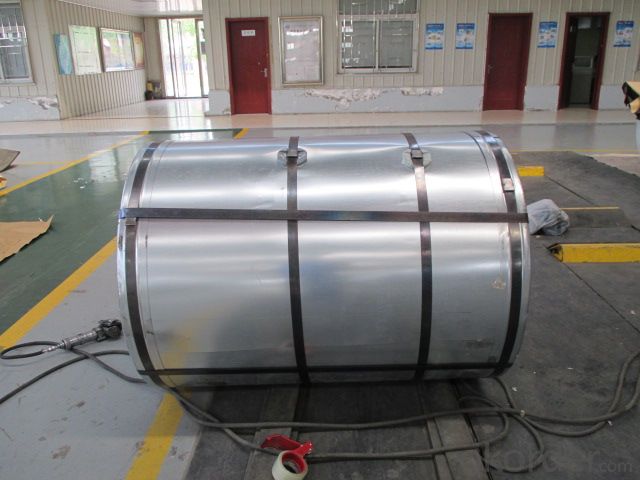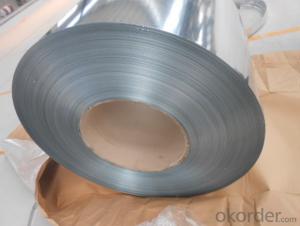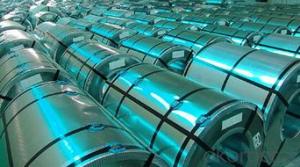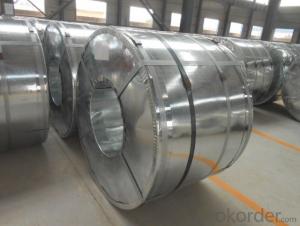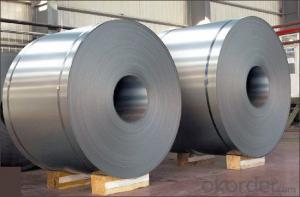PRIME GALVANIZED STEEL COIL JIS G 3302 SGCC WITH LOW PRICE
- Loading Port:
- China main port
- Payment Terms:
- TT OR LC
- Min Order Qty:
- 50 m.t.
- Supply Capability:
- 10000 m.t./month
OKorder Service Pledge
OKorder Financial Service
You Might Also Like
Packaging & Delivery
Packaging Detail: seaworthy export package
Delivery Detail: on request
Specifications
1. more than 10 years’ experience on this field
2. advanced equipments
3. competitive price
4. soonest delivery
Product Description :
Commodity
Hot dip galvanized steel coil
Technical Standard: JIS 3302 / ASTM A653 / EN10143/ GB/T 2518
Grade:DX51D/ S250,280,320GD,SGCC,SGHC,SGH340,SGH400,SGH440,G450,G550
Types:Commercial / Drawing / Deep Drawing / Structural quality
Width: 900mm/1000mm/1219mm/1200mm/1220mm/1250mm
Thickness: 0.2mm~4.0mm
Type of coating: galvanized
Zinc coating: Z40-275g/m2,Z40-Z450g/m2
Surface treatment: zero spangle / regular spangle/ big spangle
ID coil: 508mm or 610mm
Coil weight: 3-10/MT per coil
Package: Properly packed for ocean freight exportation in 20''container
Application:: home appliances, constructions, building, machineries
Our Advantages :
1. Expertise:
More than 10 years of manufacture: we know how to properly handle every step of production.
2. Competitive price:
We can offer competitive prices to our customers.
3. Accuracy:
We have excellent technicians and leaders, which can ensure our products are exactly what you want.
4. Materials:
All galvanized steel coils are made of high-quality raw materials.
5. Certificate:
Our products are certified by ISO9001.
6. Productivity:
We have large-scales of production lines,, which can guarantee all your orders will be finished in earliest time.
Hr CGL Technical Process:
Coil loading-> uncoiling-> cutting-> welding-> entry accumulator-> Heating and deoxidization-> galvanizing-> air cooling->water quenching-> air dryer-> tension leveler-> Passivation->air dryer->exit accumulator-> oiling-> cutting-> recoiling->coil unloading-> packing
The furnace heating style: improved Sendzimir heating technology
Hourly output: max.76.3t/h
Process after coating: tension leveling, Passivation or oiling
Our Service
Our quality
Test Equipments of Prepainted Galvanized Steel Coil : Salt-spray tester; Atomic absorption spectrophotometer; Rockwell typer hardness tester; Tensile test machine; Metrohm titration; Laboratory Bend test machine.
Our packing
Properly packed for ocean freight exportation in 20''container, galvanized metal fluted rings on inner and outer edges, galvanized metal & waterproof paper wall protection disk, galvanized metal & waterproof paper around circumference.
R&D department
R&D department concentrates on researching and developing reliable products with best quality. The quality department test and control every process of production to guarantee the best quality of products
- Q: How are steel coils processed for painting or coating?
- Steel coils are processed for painting or coating through a series of steps. Firstly, the coils are cleaned to remove any dirt, oil, or scale using various methods like acid pickling or mechanical cleaning. Then, a primer or chemical treatment is applied to enhance the adhesion of the paint or coating. Next, the coils are dried to remove moisture and ensure proper adhesion. Finally, the paint or coating is applied to the coils using methods such as coil coating or electrostatic spraying, and then the coated coils are cured to achieve the desired finish and durability.
- Q: What are the different types of packaging for steel coils?
- There are several different types of packaging options available for steel coils, depending on the specific requirements and preferences of the manufacturer or distributor. Some of the most common types of packaging for steel coils include: 1. Wooden Crates: Steel coils can be packed in wooden crates, which provide excellent protection against damage during transportation and handling. These crates are typically made of strong and durable wooden materials, such as plywood or solid wood, and are designed to securely hold the steel coils in place. 2. Steel Frames: Another common packaging option for steel coils is steel frames. These frames are constructed using sturdy steel materials and are designed to hold the coils securely in place to prevent any movement or shifting. Steel frames are often used for larger or heavier coils, as they offer enhanced stability and durability. 3. Cardboard Boxes: For smaller or lighter steel coils, cardboard boxes can be a suitable packaging option. These boxes are typically made of strong and durable cardboard materials, and they provide adequate protection against minor impacts and scratches. Cardboard boxes are also easy to handle and can be conveniently stacked or stored. 4. Plastic Wrapping: In addition to using crates, frames, or boxes, steel coils can also be wrapped in plastic materials for added protection. Plastic wrapping is typically used to secure the coils and protect them from moisture, dust, and other external elements during transportation and storage. This type of packaging is commonly used in conjunction with other packaging options. 5. Transportation Racks: For efficient handling and transportation, steel coils can be packaged in specially designed transportation racks. These racks are typically made of steel or other strong materials and are designed to securely hold the coils in place. Transportation racks allow for easy loading and unloading of the coils and provide enhanced safety during transit. Overall, the type of packaging chosen for steel coils depends on factors such as the size and weight of the coils, the transportation method used, and the level of protection required. Manufacturers and distributors often consider these factors in order to select the most appropriate packaging solution that ensures the safe and efficient handling of steel coils throughout the supply chain.
- Q: How are steel coils processed and treated?
- Steel coils are processed and treated through a series of steps to ensure their quality and suitability for various applications. The process begins with uncoiling the steel coil, which involves removing the outer layers of protective wrapping and unwinding the coil. Once uncoiled, the steel is inspected for any defects, such as cracks or uneven surfaces. Next, the steel coil goes through a cleaning process to remove any dirt, oil, or rust present on its surface. This is typically done using a combination of chemical cleaning agents and mechanical scrubbing. After cleaning, the coil is rinsed and dried to prevent any residual moisture from causing corrosion. Once cleaned, the steel coil can undergo various treatments depending on its intended use. One common treatment is pickling, which involves immersing the coil in an acidic solution to remove impurities and scale. This process helps to improve the surface finish and prepares the steel for further processing. After pickling, the coil may be subjected to cold rolling, a process that reduces its thickness and improves its dimensional accuracy. Cold rolling involves passing the steel through a series of rollers at room temperature, gradually reducing its thickness and increasing its strength. This process also improves the surface finish of the steel coil. In some cases, the steel coil may undergo additional heat treatment processes, such as annealing or tempering. Annealing involves heating the coil to a specific temperature and then slowly cooling it, which helps to relieve internal stresses and improve its mechanical properties. Tempering, on the other hand, involves reheating the coil to a lower temperature and then cooling it rapidly. This process enhances the strength and toughness of the steel. Once the desired processing and treatments are complete, the steel coil may be coated or painted to provide additional protection against corrosion or to enhance its aesthetic appearance. Coating processes can include hot-dip galvanizing, electroplating, or applying organic coatings such as paint or powder coatings. Finally, the processed and treated steel coils are typically cut into specific sizes or shapes based on customer requirements. This can be done using various cutting methods such as shearing, slitting, or sawing. Overall, the processing and treatment of steel coils involve a combination of cleaning, pickling, rolling, heat treatment, coating, and cutting processes. These steps are carefully carried out to ensure the quality, strength, and suitability of the steel for its intended applications.
- Q: How are steel coils used in the production of metal roofing?
- Steel coils are used in the production of metal roofing by being fed through a series of machines that shape, cut, and coat the steel to create the final roofing product. The coils are uncoiled and flattened, then formed into the desired profile using roll forming machines. The formed sheets are then cut into specific lengths and coated with protective layers to enhance durability and corrosion resistance. These coated steel sheets are then packaged and shipped to construction sites for installation as metal roofing.
- Q: What are the surface treatments for steel coils?
- Some common surface treatments for steel coils include galvanizing, painting, and coating. These treatments are applied to protect the steel from corrosion, improve its appearance, and enhance its durability.
- Q: I have a steel garage, it looks worn out hauled away? How can I maintain / repair it?
- Maintaining Your Steel Garage: # Clean your garage doors with a mild detergent using a soft car brush four times a year. # Clean the doors whenever they wash you car (washing your garage doors regularly will reduce the build up of corrosive elements) #Avoid using any abrasive cleaners or corrosive chemicals on or around your garage doors. # Avoid using salt near the garage door as it may corrode the door elements / hardware. Or you can paint your steel garage: #Step 1 Clean the door using a low-pressure sprayer. Combine 5 gallons of warm water and 1 cup of low-phosphate detergent to clean the surface. Rinse well and dry the surface. #Step 2 Lightly sand and smooth the scratches which do not go through to the metal substrate. Dust off sand residue. For a door with a baked on finish, use a powdered cleanser (diluted with water) and a soft brush to rough up the surface for better paint adhesion; do not use sand paper. Rinse with water and allow it to dry. #Step 3 Apply primer to areas where scratches permeate to the metal substrate to avoid future rusting or corrosion. Allow it to dry. #Step 4 Paint the door with an even coat of latex exterior house paint. If your steel garage has a dent check out the site(the last source link at the bottom)
- Q: i mean the properties include the elasticity, impact load and ductility. am doing assignment about the perfect material that should be possessed by spring and i found alloy steel is the perfect and am confused whether stainless steel is the same with alloy steel ?
- Is Stainless Steel An Alloy
- Q: Why is it usually scorned by the shooting community to use steel cased ammo (like Wolf)? Always hear corrosive and steel is bad for the extractor/firing pin. Hulp a simpleton out!
- I okorder /
- Q: I'm searching for the elastic modulus of ASTM A653 galvanized steel sheet. Max points for first person with a response that includes web address of reliable reference - I just haven't found it yet. thanks!
- I've okorder /
- Q: My teacher says if they were that they would still be standing today. I'm not sure if he means the reinforced steel in the concrete beams, columns etc or if the whole beams and columns floor etc were were made of reinforced steel.
- Reinforced Steel is found in concrete, and if the towers were built with reinforced concrete (concrete beams with rebar) then they would likely still be standing. The twin towers were made of steel. When steel is heated up, it deforms and collapses, which is why it didnt stand up. One of the top 2 things against steel is that it is not fire resistant.
Send your message to us
PRIME GALVANIZED STEEL COIL JIS G 3302 SGCC WITH LOW PRICE
- Loading Port:
- China main port
- Payment Terms:
- TT OR LC
- Min Order Qty:
- 50 m.t.
- Supply Capability:
- 10000 m.t./month
OKorder Service Pledge
OKorder Financial Service
Similar products
Hot products
Hot Searches
Related keywords

